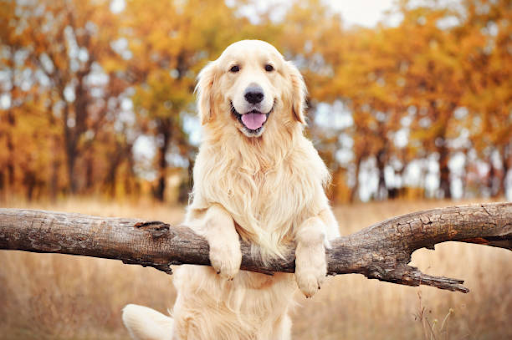Should Your Dog Become Vegan? Pets vs. the Environment

UCLA professor Gregory Okin found that the diet of cats and dogs can produce “64 million tons of carbon dioxide a year” due to their meat consumption.
Scene: An idyllic, federally protected nature park on a cloudless April afternoon. Colorful, endangered birds chirp in the trees, rare flowers bloom along the barely-treaded path, and suddenly, a crash resounds. A fluffy golden retriever bounds through the forest, snapping branches and trampling flowers in its excitement. No matter how much we like our pets, we must be aware of their destructive environmental impact, especially the effects of their diets and potential to become invasive species.
The friendly pupper’s diet includes kibble, a mixture of grains, meats, and other ingredients, but the meat component is what causes a major problem. Feeding cats and dogs has heavy costs on the environment because of their high meat consumption and waste production. In fact, UCLA geography professor Gregory Okin, who studied pet foods’ contribution to climate change, found that “cats and dogs are responsible for 25 to 30 percent of the environmental impact of meat consumption in the United States.” If animals were a nation, they “would rank fifth in global meat consumption.”
People often discuss the environmental impacts of humans’ dietary habits, arguing that meat consumption is correlated with climate change; the same reasoning should apply to pets. It is true that animals often consume the waste of meat, lessening the effects of their diets. Yet despite our love for them, we should acknowledge that they do actively contribute to climate change to a certain extent.
Ethics comes into play as well. Animals are slaughtered to create meat for humans, which is arguably unethical. Yet much less recognized is the fact that feeding pets meat leads to the death of more animals. The injustice of the situation is clear: some animals are prioritized, especially the cute, cuddly, and domesticated, while others are sent to the slaughterhouse because of their role as a meat source.
Aside from their diets, pets also have a negative impact on nature when they are released into the wild: they may become invasive species. In the lake by the nature park, where once beautiful fish swam, there now live bloated goldfish grown more than twice their usual size. Goldfish are a common example, but this issue particularly affects exotic pet owners.
People who want to purchase an exotic pet may be unsure of the pet’s needs, so when they are unable to manage, they release the pet into the wild. A National Geographic article mentions that “red lionfish, highly venomous aquarium fish introduced into Florida waters in the late 1980s, have significantly diminished the abundance and diversity of marine life on the state’s coral reefs.” As a result, invasive species greatly harm the ecosystem, contributing to the loss of species and diversity.
All this is not to say that people should stop buying pets. Pets have many benefits as well, creating a difficult decision for those interested. According to the National Institutes of Health, pets provide mental health benefits, allow for increased exercise, and can serve as support and guide animals.
It’s definitely hard to provide guidelines about whether or not to have pets because they’re so helpful yet so destructive. The effects also depend on the pet owner’s sense of responsibility and ability to manage their pet.
In terms of diet, one option is to switch animals to a vegan-based diet. This is challenging and requires consultation with a professional. However, according to the BBC, some companies have begun attempting this effort to reduce the environmental impacts.
For exotic pets, a possible solution, according to the National Geographic article, is for pet sellers to provide better information about the pet’s requirements at the time of purchase. Buyers must also take the time to do research before choosing a pet. If they cannot handle their pet’s demands, they may want to speak to the store or a friend who can take care of it instead.
It is difficult to balance our love for our pets with our desire to protect the environment. Clearly, a multifaceted solution is required, one that we should all put our heads to if we want to protect both our pets and our planet.






